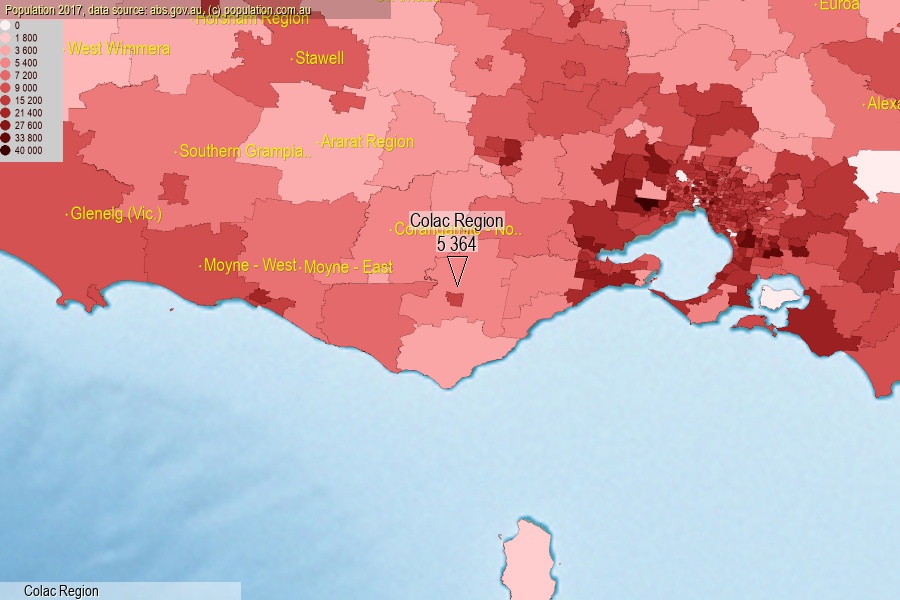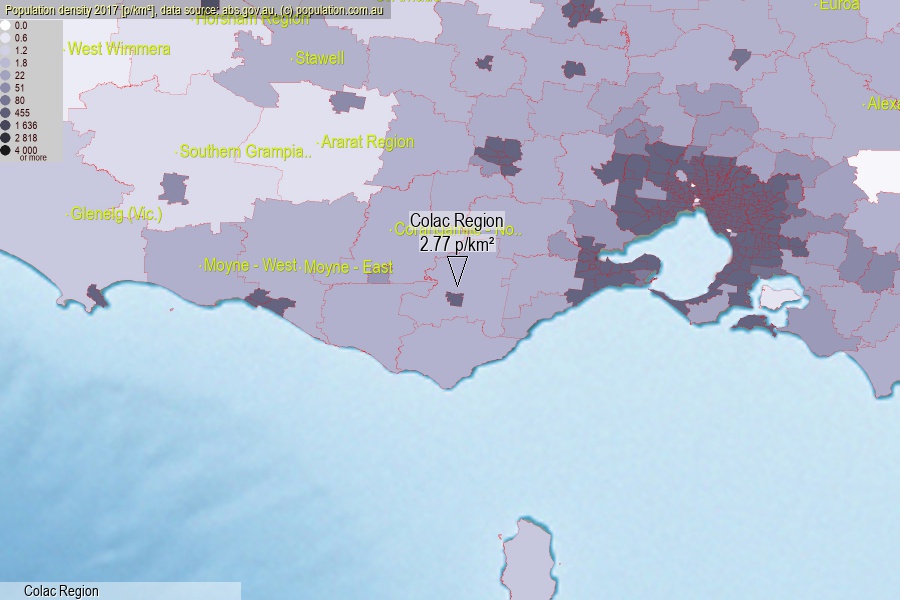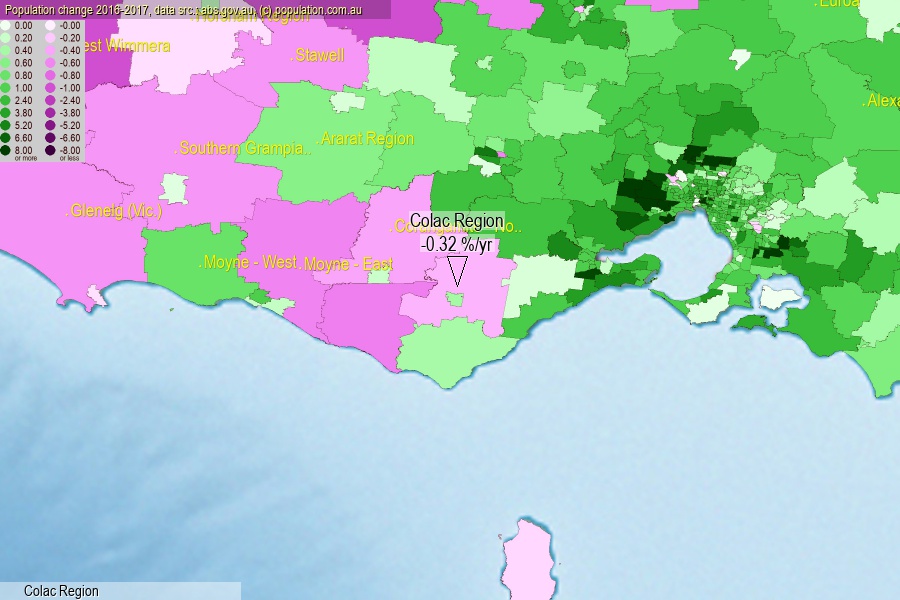 population.com.au
population.com.auLast official estimated population of Colac Region (as Statistical Area Level 2) was 5 364 people (on 2017-06-30)[2]. This was 0.02% of total Australian population and 0.083% of VIC population. Area of Colac Region is 1 934.30 km², in this year population density was 2.77 p/km² . If population growth rate would be same as in period 2016-2017 (-0.32%/yr), Colac Region population in 2025 would be 5 230. [0]



Click to enlarge. Colac Region is located in the center of the images.
Population [people], population density [p./km²] and population change [%/year] [2]
View borders » (new window) [4]
[2001-2002] -1.01 %/Yr.
[2002-2003] -0.42 %/Yr.
[2003-2004] -0.23 %/Yr.
[2004-2005] -0.44 %/Yr.
[2005-2006] -0.79 %/Yr.
[2006-2007] -0.55 %/Yr.
[2007-2008] +0.16 %/Yr.
[2008-2009] -0.64 %/Yr.
[2009-2010] -1.52 %/Yr.
[2010-2011] -1.83 %/Yr.
[2011-2012] -0.20 %/Yr.
[2012-2013] -0.09 %/Yr.
[2013-2014] -0.20 %/Yr.
[2014-2015] -0.20 %/Yr.
[2015-2016] 0.00 %/Yr.
[2016-2017] -0.32 %/Yr.
[0] Calculated with linear interpolation from officially estimated population
[1] Read more about SA2 and Australian Statistical Geography Standard (ASGS) on abs.gov.au
[2] Population data from Australian Bureau of Statistics (Population and density: 2017; change: 2016-2017)
[3] Digital Boundaries: Australian Statistical Geography Standard (ASGS) 2016.
[4] Border coordinates are simplifyed using Ramer-Douglas-Peucker algorithm.